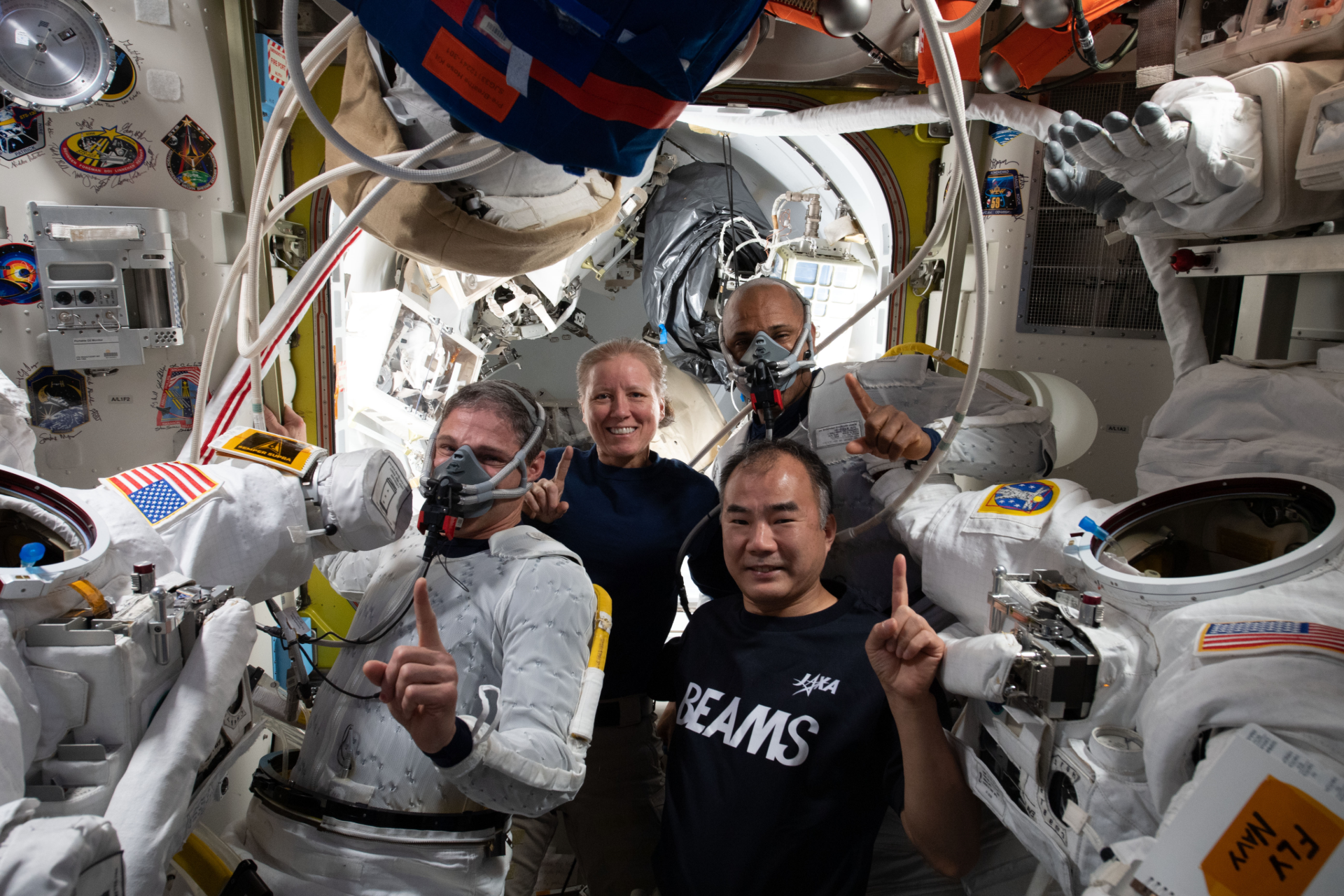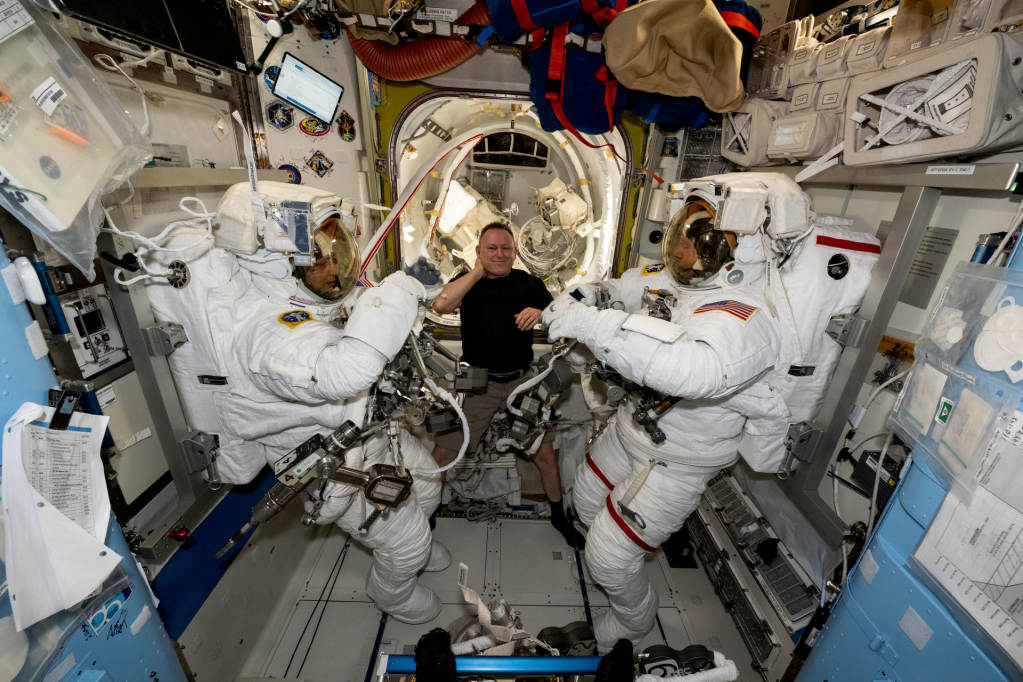Risk of Hypoxia

Credit: NASA/Kate Rubins
What are the top risks?
Future missions to the Moon, Mars, and beyond will require more frequent spacewalks. But keeping astronauts safe and healthy during any spacewalk currently requires many hours of preparation and a large supply of pure oxygen. Astronauts must inhale pure oxygen over several hours prior to spacewalks to avoid decompression sickness, also known as “the bends.”
To help slash the pure oxygen needs for future frequent spacewalks, NASA’s spacecraft for deep-space missions will have astronauts live and work in a constant partial cabin depressurization (something that now only occurs in the airlock prior to spacewalks). This altered cabin environment will help reduce nitrogen in the body passively.
Yet that partial depressurization will simultaneously increase the risk of mild hypoxia — a condition that occurs when oxygen levels in body tissues become lower than normal. Mild hypoxia, if untreated, can cause confusion, headaches, vision impairment, and trouble sleeping.
What can be done about it?
NASA’s health experts are researching hypoxia to design protocols that balance oxygen concentration and pressure to optimize astronaut health and performance before and during spacewalks. Creating spacesuits that have the option for crews to be able to toggle pressure increases inside their suits while conducting spacewalks is another area of current research.
No current ground-based study exists to test different oxygen exposure levels on humans while they’re experiencing all the stressors of spaceflight. Instead, scientists are using decades of archived health data on spacewalks to try to extrapolate answers to several questions. For example, will a mildly hypoxic, reduced-pressure environment make any known astronaut health issues worse? If so, what oxygen levels might be tolerable? Scientists are also gathering data from studies conducted in pressure chambers that can simulate spaceflight atmospheres. Studying volunteers that spend hours or days in these chambers allows scientists to learn more about hypoxia and decompression sickness risks and to test potential interventions.
Researchers are using all these areas of research to build new health monitoring protocols and treatment strategies to track how future astronauts will adapt to partial depressurization. These new protocols are being incorporated into medical operations and planning for future missions.
Did you know?
NASA scientists currently consider the hypoxia risk associated with future spaceflight missions to be relatively low. Most likely, hypoxia experienced on a mission would be similar to the altitude sickness a person may experience after newly arriving in a high mountain community. Of course, it’s one more stressor on top of the other stressors of human spaceflight. That’s why scientists are continuing to study and assess this risk on its own and in the context of other spaceflight risks.
Formal risk description: Risk of reduced crew health and performance due to hypoxia
Research in support of this risk: Latest evidence
Explore more: Human System Risk Board resources
Related Content






























